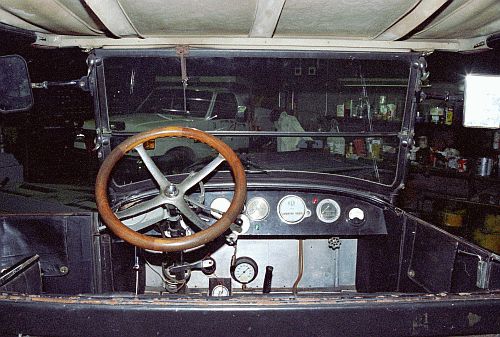|
Sitting In The Back Seat Looking At The Dash The dash area was the first area of the car to give a hint that lots of changes had been made to the car. The car was originally restored in the early 1950s by Harlowe Zinn of New Jersey. In September 1952 Popular Science included an article on Harlowe’s restoration of the car. Excellent photographs in that issue show that Harlowe stayed true to how Stanley built the car with two exceptions; Harlowe added a three-inch diameter, 1000 PSIG pressure gauge to the bottom center of the firewall. The gauge was plumbed such that it could indicate to Harlow if the water pumps were providing water to the boiler. The original electrical system included an Apple Electric four-post voltage regulator mounted on the firewall in front of the right passenger seat. That unit had failed and a modern 6-volt regulator was neatly added under the hood along with an ammeter mounted in the dash to indicate the charging or discharging rate of the battery. In the photograph above the second gauge from the right is the added ammeter. Shown in the photograph are two modern indicators that were drilled into the dash by Marvin, These provided indication that the stop light at the back of the car was working (red indicator) while the green indicator blinked with the turn signals another addition that Marvin made for safety. Hung from the underside of the dash is an L-shaped metal rod that went through the firewall, over the boiler, and connected to a gate valve which controlled steam flow to a 3-note locomotive chime that Marvin located under the front left fender. Click on the link to read the September 1952 Popular Science article. Note that Adobe Acrobat 5.0 or later is required to read the article. A new browser window will open to view the document. As the file is 1.5 megabytes in size it will take a few minutes to download into the viewer. |
